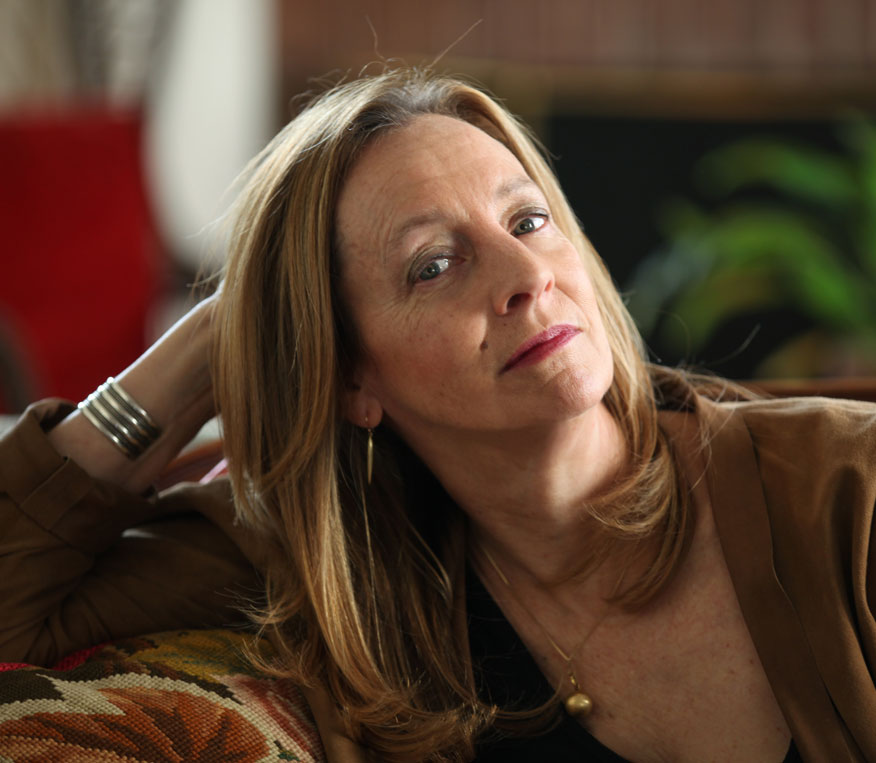
photo: Steve J. Sherman
What does the opening of Ravinia Music Box and the Bernstein’s Answer show mean to you?
For my brother, sister, and me, we see the Ravinia Music Box as a hugely exciting opportunity to introduce our dad to younger people, and in a deeply meaningful context – because the presentation evokes our dad’s lifelong devotion to using music to make the world a better place.
What do you think your father would have thought of the Bernstein’s Answer show?
I think my dad would have loved the exuberance of the presentation; it radiates the same childlike joy which Bernstein himself often emanated from the podium. I also think he would have appreciated that the show does not shy away from tough questions and topics. His own musical compositions expressed all the extremes of human emotion: fear, longing, love, fury.
Bernstein’s Answer really shows how Bernstein used his music to paint a portrait of the world he lived in – both the outer and the inner world – and how that music can help us make sense of our own worlds, too.
Is there a part of the show that particularly resonated with you?
I really appreciate the moment when the questions get tough, and my dad’s music underscores some disturbing images of human turmoil. I like that it’s... real.
Beautiful, heartfelt music can help us get through the tough times, not just celebrate our joyous times. This is a great message for kids: we won’t pretend there aren’t bad, scary things out there, but we also know that music is a potent tool we can all use to help us get through the tough stuff, and has a unique power to connect us, to bring us together in – literally – harmony.
What was your experience of working with BRC Imagination Arts?
Brad Shelton and his team at BRC were unfailingly generous and patient in explaining to our group at the Leonard Bernstein Office what their vision was. They worked hard with our music editor, Garth Sunderland, to get the music cues right, and they did their utmost to honour Bernstein’s music as they went along. It was beyond touching for all of us to witness how devoted the whole BRC team was to communicating what our dad stood for through his work and his legacy.
The goal of the project is to introduce new listeners to classical music. What role has music played in your life?
In a way, I’m the least useful person to ask about the role classical music has played in my life – because I lived and breathed it from the day I was born! It gave me a chance to learn how to do a deep dive into music. You can hear a work like, say, Tchaikovsky’s Fourth Symphony, and get a kick out of it on one listen. But: when you hear it a few times, or maybe sit in on a rehearsal, or best of all, even get to play an instrument in the piece, it will start to unfold for you like a magic, multicoloured flower. Every time you hear it, you’ll get more out of it.
This is a great message for kids: we won’t pretend there aren’t bad, scary things out there, but we also know that music is a potent tool we can all use to help us get through the tough stuff
What can classical music offer young people?
In Caracas, Venezuela, I sat in an audience full of young kids who were participants in the country’s famous El Sistema youth orchestra programs. Those kids knew their “Tchaik 4,” as we like to call it, by heart – and they were hearing a fantastic performance conducted by their fellow Venezuelan, Gustavo Dudamel, who had risen through El Sistema and was now an international superstar.
The kids were leaning forward in their seats, straining with anticipation for their favourite moments, and at the end, they whooped and hollered as if they were at a ball game! I was so profoundly delighted by this: that’s exactly how I feel when I hear a great performance of a piece I know and love. I hope young viewers at the Ravinia Music Box will be moved to try some deep dives into the glorious waters of orchestral music.
What would you like visitors to take away about your father?
I would love for young people to treasure Leonard Bernstein as an artist who, even though he lived before them, has the power to speak directly to them through his music. I hope they explore his compositions further.